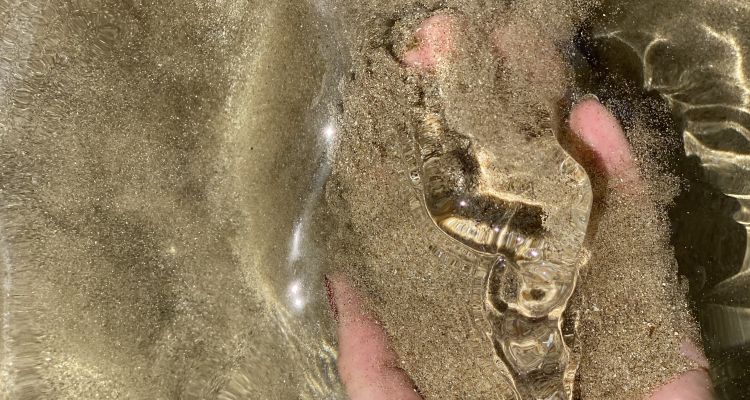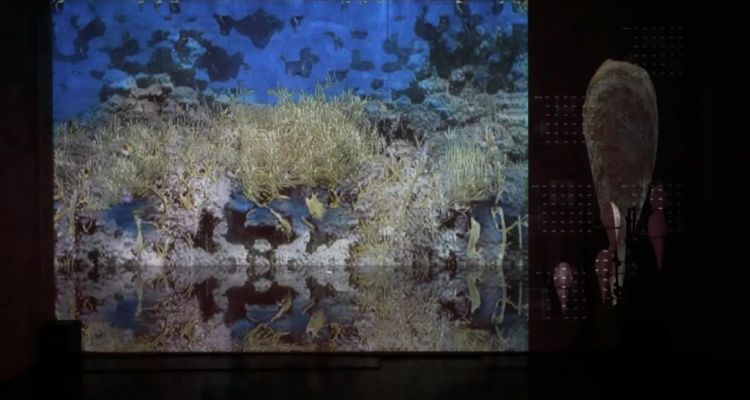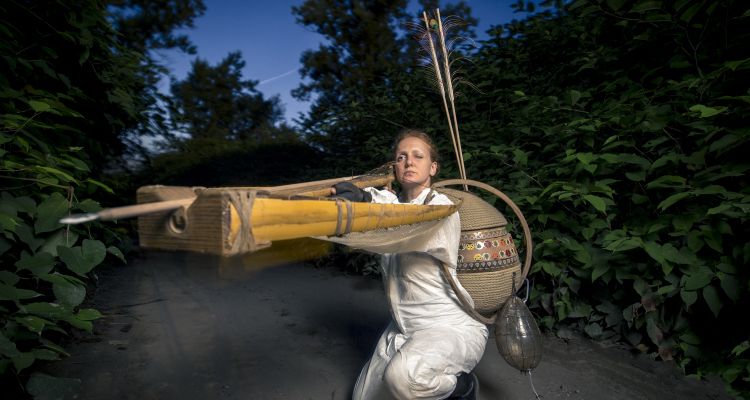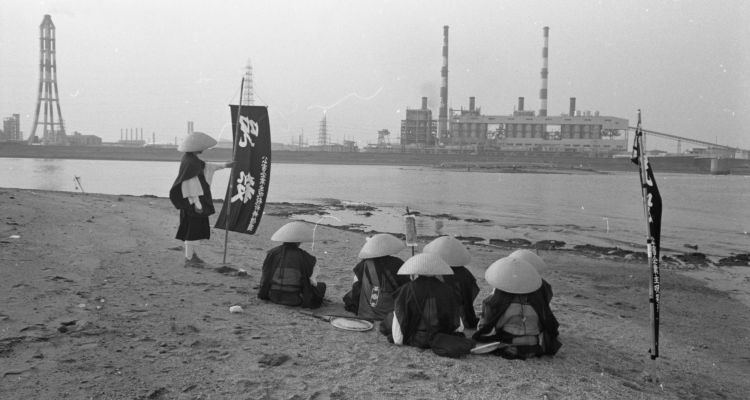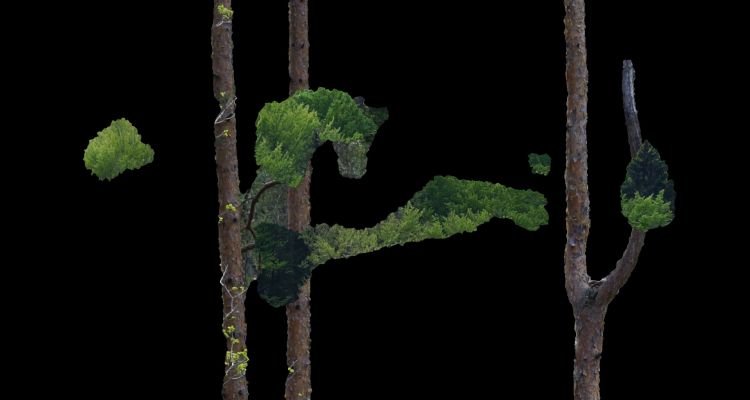Exhibition opening: Thursday, 19 May 2022, at 8 p.m.
Duration: 03 December 2021 — 11 September 2022
Agnieszka Brzeżańska | Šempas Family | Vadim Fiškin | Mitsutoshi Hanaga & Jusatsu Kito Sodan (Group of Monks Bringing the Curse of Death) | Kim Beom | Neža Knez | Natalia LL | Polonca Lovšin | Karel Miler | Peter Nadin & Natsuko Uchino & Aimée Toledano | OHO (Marko Pogačnik, Milenko Matanovič, David Nez, Andraž Šalamun, Naško Križnar, Iztok Geister, Matjaž Hanžek) | Marko Peljhan | Špela Petrič | Plateauresidue | Marika & Marko Pogačnik | Porodica bistrih potoka / Family of Clear Streams | Marjetica Potrč | Franc Purg | Maja Smrekar | Robertina Šebjanič & Sofia Crespo & Feileacan McCormick | Miloš Šejn | Petr Štembera | Aleksandra Vajd & Anetta Mona Chişa | ZAKOLE | Brane Zorman |
Exhibition curators: Ana Mizerit, Bojana Piškur, Zdenka Badovinac, Igor Španjol.
An Annex. Notes from the Penumbral Age edited by Sebastian Cichocki.
The Emergency Exit exhibition revolves around the burning environmental issues of our time, looking for answers in postwar neo-avant-garde artistic practices and current ecological initiatives. Responding to apparently hopeless situations of social and ecological cataclysms, such initiatives seek ways to survive in a system affected by the collapsed structure of the ecosystem. The question this raises and that the artists try to answer is whether there is an emergency exit out of the situation we have all found ourselves in at the start of the third millennium.
The main emphasis of the first part of the exhibition is on the heritage of the holistic environmental activities of the OHO movement and the art collectives and artistic practices that were inspired by it.
In the second half of the 1960s, the OHO movement developed several ways to overcome what was then already a quite catastrophic ecological situation on Earth, joining the international trend of kindred visionary movements of the time.
Today, Marko Pogačnik is looking for a way out of the situation our civilization is facing by developing a new level of working with the elemental consciousness of Earth and all of its visible and invisible beings.
In the 1970s, the Šempas Family aspired to create a model of human civilization founded on working in harmony with the Earth and its spiritual dimensions. An open and fluid commune, the Family brought together agriculture, crafts, and creative artwork. The Family of Clear Streams followed suit, an ecological and art commune established in a small village in Serbia, based on respect for and development of ecology, humanism, and culture. For 45 years the Family of Clear Streams has kept up its poetic resistance to the senselessness of our civilization and the crisis of ideas, a resistance that can likewise be found in the performance works of Natalia LL, Karel Miler, Miloš Šejn, and Petr Štembera.
Also presented is a “spinoff” of The Penumbral Age. Art in the Time of Planetary Change, an exhibition of the Museum of Modern Art in Warsaw, based on observations and visualizations of the changes underway on planet Earth, and providing a space for discussion on “managing the irreversible” and new forms of solidarity, empathy, and togetherness in the age of the climate crisis. This special presentation, An Annex. Notes from the Penumbral Age, features the following artists:
Agnieszka Brzeżańska, an artist with a profound environmental and cultural awareness, is drawn to the supposedly binary opposites in our concepts of culture and nature.
The photographer Mitsutoshi Hanaga documented the efforts of the group of Buddhist monks Jusatsu Kito Sodan (Group of Monks Bringing the Curse of Death) in their alternative way of seeking justice for the environmental pollution caused by large corporations.
Underpinning many of the works by the multidisciplinary artist Kim Beom is animism – the belief that all objects, places, and beings possess a special spiritual essence.
The visual artist Peter Nadin’s film made in collaboration with the agriculture and ceramics artist Natsuko Uchino and film director Aimée Toledano is a poetic and profound observation of his attempts to bring together art and agriculture.
ZAKOLE is an art, research, and climate advocacy collective from Warsaw, whose artistic practice is informed by hydro-feminist thought and created with an aim to generate and exchange various kinds of knowledge.
Recent art production in Slovenia focuses on environmental issues and possible survival strategies in the face of the global destruction of ecosystems, anthropogenic climate change, and the perpetuation of social injustice. The selected art projects oppose the merely instrumental relationship between humans and nature in terms of wonder, domination, and vital dependence, advocating reciprocity that must include the non-human world also at the level of political struggle against a dead future and the loss of humanity.
Directly confronting the viewer with the question What Can I Do for the World?, Vadim Fiškin’s sculpture displays the artist’s characteristic sense of humor despite the gravity of the reality and the limitations we impose on ourselves.
In her multimedia installation, Neža Knez talks about experiencing a place and one’s connection to it through a personal narrative. She explores the identity of a landscape from various vantage points and through attempts to transfer its experience into a gallery setting.
In her research of the forest and its ecological importance from the perspective of climate change, Polonca Lovšin presents the forest as one of the key ecosystems for the future of all of us.
Franc Purg’s project focuses on contradictions; among others, the artist wonders how it is possible that the most intelligent beings on Earth – humans – are building a system, a belief in progress and a better life, while fully aware that it is precisely this that is leading to its end.
Marko Peljhan’s mobile project Makrolab, powered by sustainable sources of energy, was designed as an autonomous environment for researching extreme climate conditions, complex telecommunication systems, and migration patterns.
In an art and research project focusing on plant life, Špela Petrič explores “the menagerie of relationships with over-coded tools [which] occupies the mind and opens us up to plant encounters outside of logos.”
The video installation project of the duo Plateauresidue emphasizes the shared responsibility of humanity to use modern methods to understand and recognize the complexity of forest ecosystems and develop sustainable management techniques.
Based on a draft created by Jože Plečnik entitled A Common Roof, the wall drawings of the artist and architect Marjetica Potrč emphasize the power of participatory design and focus on the electricity, communications, and utility infrastructure.
Maja Smrekar’s project presents a paraphrase of disappearing cultures and local economies that dissolve in the pool of modern capitalism. It presents a work of art as some sort of film trailer for, or a premonition of, a possible future ensuing from the climate crisis.
Robertina Šebjanič & Sofia Crespo & Feileacan McCormick’s audiovisual installation addresses the possibility of an empathic human relationship to more-than-human entities and explores the changes in the marine environment caused by human presence.
Aleksandra Vajd and Anetta Mone Chişa’s photographic project-in-progress is based on parts of the human body and various natural forms symmetrically fused and connected to form a single structure and a new whole in which one mirrors the other.
Brane Zorman’s sound installation creates an emotional and dramatic musical tale with the recorded and processed sounds of trees, produced both inside the plants themselves and as a result of human touch or environmental impact.
A catalogue will be published to coincide with the exhibition. It will include essays by Bojana Kunst, Tomaž Mastnak, Bojana Piškur, and Maja and Reuben Fowkes.
